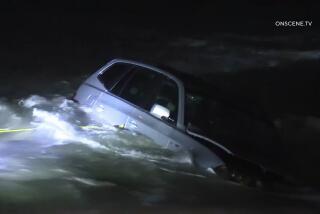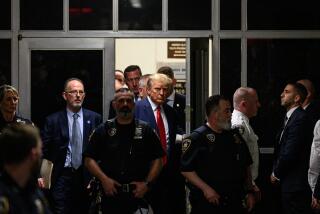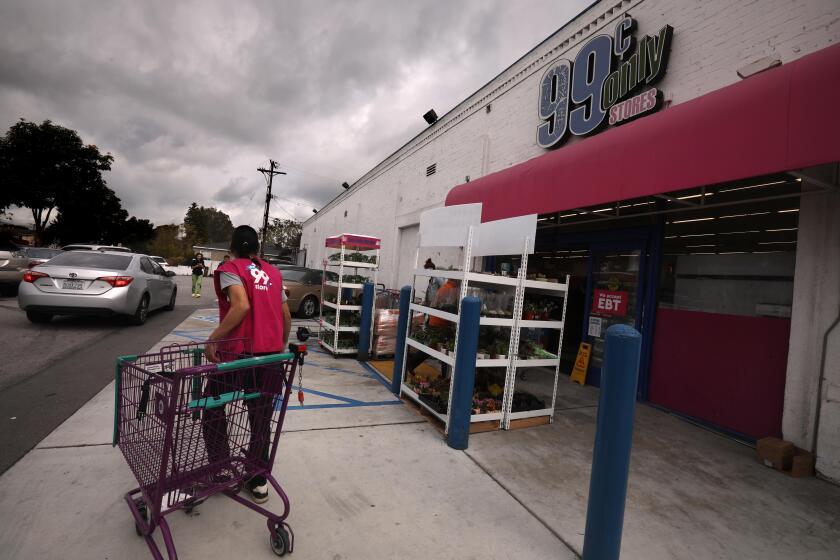Opinion: Are Angelenos still an ‘automotive people?’ Measure M will tell
Nearly 50 years ago, Los Angeles County voters were asked to approve the region’s first sales tax increase for public transportation. The plan was to build a network of rail lines that would let people leave their pollution-spewing cars at home and be whisked across town on computer-driven, smog-free electric trains. L.A. was well into the freeway era by the late 1960s, and the region’s love affair with the car had turned open roads into gridlock and smog had become a threat to public health.
Proposition A, as the 1968 ballot measure was called, outlined a $2.5-billion plan to build 89 miles of rail connecting Long Beach, the San Fernando Valley, Westwood, the San Gabriel Valley and LAX through downtown L.A. Transportation planners envisioned electric trains operating on “exclusive rights-of-way in subway, skyway and at ground level” that would rival the Bay Area Rapid Transit (BART) system then under construction in the San Francisco Bay Area. Sketches from the Proposition A plan show trains that look like Disneyland’s monorail pulling into elevated stations connected to offices by skyways. In addition to the rail lines, the tax was supposed to fund 850 additional buses operating over 300 miles of new routes.
Proponents argued the tax was an investment in the future. It would bring speedy train service within reach of more than two-thirds of the county’s population, lessening the need to drive and helping to reduce smog. Opponents countered that Los Angeles was too decentralized for a fixed-rail network, and people would never leave their cars for a train.
The Los Angeles Times, alas, sided with the opponents and so did voters. Proposition A failed. In its opposition, The Times Editorial Board argued, “We are an automotive people, unlikely to change our habits.” Instead, the paper urged transportation officials to focus on freeway ramp meters, one-way streets and bus lanes to help ease traffic congestion — hardly the transformative changes necessary to reduce the region’s dependence on single-occupancy vehicles. We remained an automotive people for decades as L.A. continued its sprawl into the suburbs, stuck in traffic and breathing smoggy air.
It was 12 years before L.A. County voters finally approved the first half-cent sales tax for transportation, in 1980. By then, The Times was on board with mass transit, arguing that “Los Angeles cannot afford to wait any longer to start making a serious investment in a transportation system better suited to an era of tenuous energy supplies.” (The U.S. was still feeling the effects of the oil crisis and gas shortages brought on by the Iranian Revolution.) That measure, also called Proposition A, eventually helped build the Blue Line light rail to Long Beach in 1990 and the Red Line subway to North Hollywood in 2000.
Voters passed additional tax hikes for transportation with Proposition C in 1990 and Measure R in 2008, which helped complete this year the Expo Line rail to Santa Monica and the Gold Line to Azusa.
Next month, voters will again consider a tax hike to build out the public transit system. Measure M on the November ballot would raise the sales tax by a half-cent and make the Measure R half-cent increase permanent. If approved by two-thirds of voters, two-cents on every dollar spent in L.A. County would be dedicated to transportation projects. The Times supports Measure M because the region cannot continue to prosper without investing in a modern, efficient transportation system.
Measure M would go far beyond the 1968 vision of public transit. It would build more rail lines covering more miles and increase the number of dedicated busways. It would also invest in bike paths, bike lanes and projects designed to make it safer and easier for people to walk to their destinations – which are crucial parts of a city’s transportation infrastructure that have been too often overlooked. Measure M does include money for highway projects – 17% of the funding stream – because nearly 50 years later, Los Angeles is still a region made for cars and we are still largely an automotive people. More than 70% of commuters in L.A. County drive alone.
But we can change. The boom in ridership on the new Expo Line and Gold Line extensions suggests that Angelenos want and will use fast, convenient and affordable public transit. What would really be fantastic is to have a meaningful choice. Right now, many people don’t have a good choice. They’re either stuck driving in traffic, assuming they own a car; or forced to navigate a half-built transit system that requires multiple transfers; or stuck biking or walking on unsafe streets that were designed for car traffic.
Nearly 50 years ago, voters rejected the idea that Los Angeles could have a modern public transit system, which led to decades of the same-old traffic, same-old car-dominated landscape that effectively forced people to drive and discouraged walking and biking. Los Angeles has begun to evolve beyond the idea that we’re an automotive people unwilling to change. Measure M on the November ballot will test that theory.
For more opinions, follow me @kerrycavan
More to Read
A cure for the common opinion
Get thought-provoking perspectives with our weekly newsletter.
You may occasionally receive promotional content from the Los Angeles Times.







